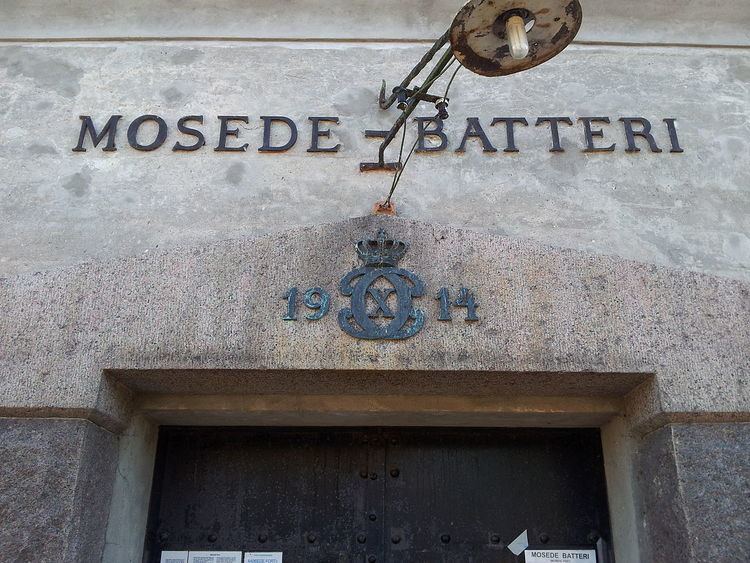Condition Well preserved Built 1913 (1913)—16 | Open tothe public Yes Website Official website Phone +45 43 40 40 36 | |
 | ||
Hours Open today · 11AM–4PMSunday11AM–4PMMondayClosedTuesday11AM–3PMWednesday11AM–3PMThursday11AM–3PMFriday11AM–3PMSaturday11AM–4PM Similar Greve Museum, Garderhøj Fort, Fortun Fort, Dragør Fort Hotel, Kastrup Fort Profiles | ||
Mosede fort
Mosede Fort, located in Mosede, Denmark is a coastal fort build, part of Tunestillingen, in the years before and during the First World War, to protect the Bay of Køge from possible German naval invasions. It is now a protected area with a museum, grassy fields for recreation and a restaurant.
Contents
Mosede fort
Construction
Mosede Fort was as part of Tunestillingen, a 22 km (14 mi) long line of fortifications around outer-Copenhagen, leading military historian A. N. Hvidt to calling it the "Danevirke of Sjælland". Construction began in 1913, but was first battle-ready in July 1916. The battery was originally dubbed "Mosede Battery" but was popularly called Mosede Fort. It was fully manned until 1922, and was thereafter only used for drills.
World War 2
The Fort was re-manned in 1939, but it was captured by the Germans in 1940, who used it as an observations post and prison camp. When Denmark was liberated, the government continued to use the fort as a detention camp until 1947. It was then handed over to Hjemmeværnet, who used it for shooting practice and drills until 1970, when it got overrun and "liberated" by the local population. It has since then been a park open for public.
Mosede Fort Today
Mosede Fort is now being preserved by Greve Kommune, it is very popular as a recreational area for ballgames, picnics and other past time activities. It also has a restaurant. In 2010 Greve Kommune along with Greve Museum, began to restore and insulate the old fort so it could be dehumidified sufficiently, in order to store historical objects safely. It was planned to open Denmark's first "Denmark during World War 1" museum with the inauguration on 1 August 2014 - 100 anniversary of Germany's declaration of war on Russia. On 30 September 2012, during the celebration of Copenhagen's fortification, a 120mm Howitzer was presented by Greve Museum as the trademark for Mosede Fort. The museum opened 6 August 2014, with HRH Prince Joachim of Denmark attending.
Equipment
The fort was equipped with the most modern artillery, a generator, a water-supply, central-heating, telephone, kitchen and bomb-shelters capable of keeping 150 men. The Fort was armed with:
